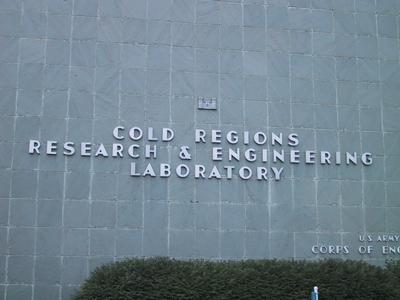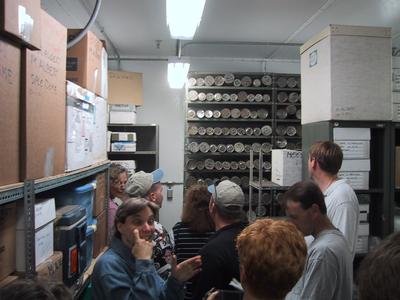
|
8 August, 2001Imagine stepping through a doorway and having the temperature drop by almost 125 degrees! At the U.S. Army’s Cold Regions Research and Engineering Laboratory (CRREL) that’s exactly what could happen. CRREL’s “cold room” is kept at –25 degrees Fahrenheit or colder to store materials and samples used by scientists and engineers here at the research lab. This could include precious ice core samples taken from the Arctic or Antarctic. Samples such as these can provide researchers with a glimpse into the past. Volcanic ash, micrometeorites, even the air from hundreds of years ago can be locked up in these frozen “time machines” for study. CRREL, located near Hanover in western New Hampshire, supports research for done for both the military and the civilian community. I’m here as a parcticipant in an orientation workshop as part of TEA (Teachers Experiencing the Arctic and Antarctic) along with 11 other teachers who will be going to polar regions (six to the Arctic and six to the Antarctic in the 2002/2003 time frame). As people who live in the Northeast know, frost heaves are a major concern to both drivers and city public works departments. The expansion of frost below roads during New England winters can cause major problems. One of the projects being worked on at CRREL is to determine ways to prevent this from happening. During our visit at the Ice Engineering Facility we were able to observe sensors being buried in an eight-foot deep substrate that simulates a road. By studying the effects of the frost in a controlled environment, researchers hope to discover ways to prevent heaves. One way might be to incorporate a mat in the construction of roads that is able to wick away the moisture which later freezes, expands, and causes the frost heaves. Get your FREE download of MSN Explorer at http://explorer.msn.com
Contact the TEA in the field at . If you cannot connect through your browser, copy the TEA's e-mail address in the "To:" line of your favorite e-mail package. |




